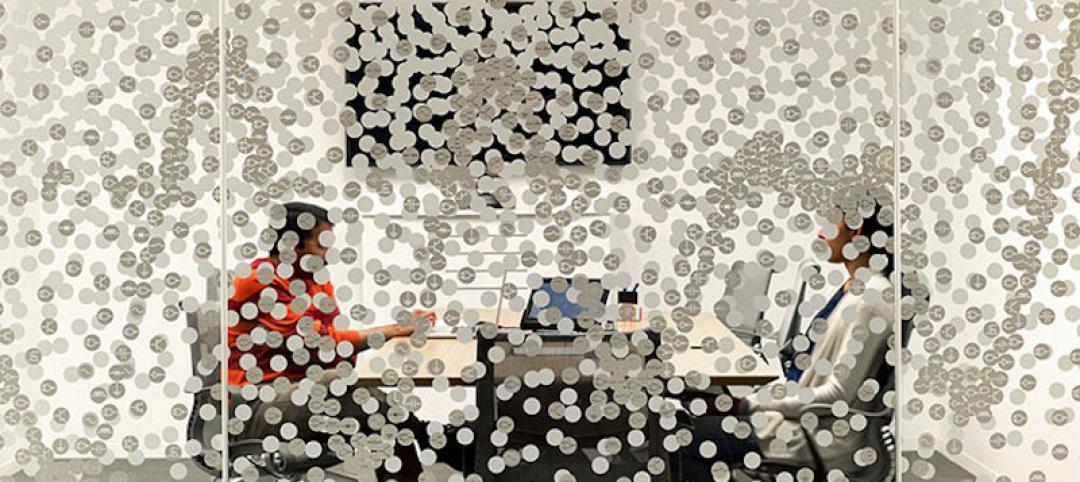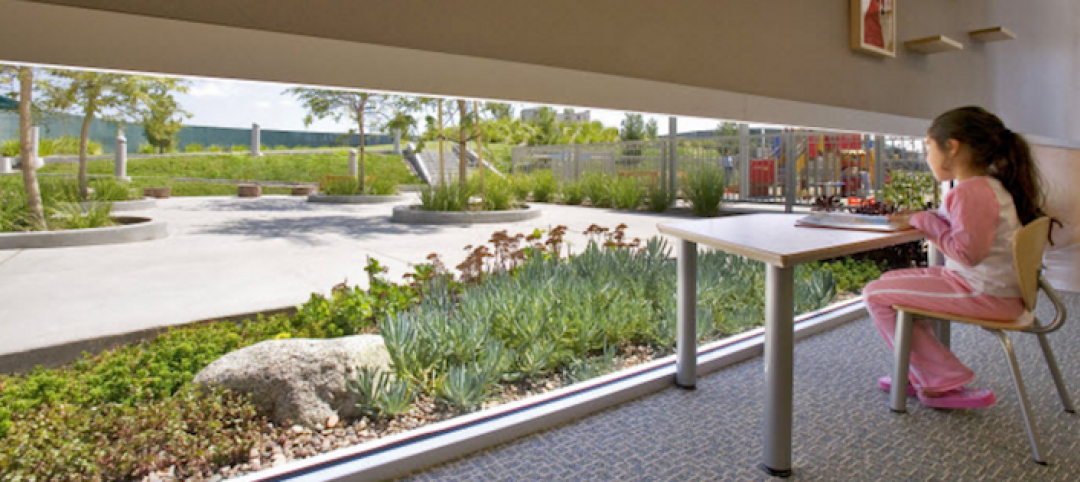A three-story “library-plus” building at California State University, East Bay (CSUEB) that ties together the upper and lower campuses was recently completed. The 100,977-sf facility, known as the Collaborative Opportunities for Research & Engagement (“CORE”) Building, is one of the busiest libraries in the CSU system. The previous library served 1.2 million visitors annually.
The new building offers students 700 more seats and 21 more group study rooms than the facility it replaced. Much more than a library, CORE brings traditional library services together with learning, innovation, and technology; collaboration and engagement; and social justice, diversity and sustainability.
It houses the Student Center for Academic Achievement (SCAA—for peer tutoring and study groups) and the Hub for Entrepreneurship, both of which help students become self-directed learners in the Information Age economy.
Equipped with state-of-the-art information and audio-visual technologies, the building provides diversity of spaces to support study rooms and collaborative commons along with multimedia production and library spaces for print and digital collections, archives, and special collections.
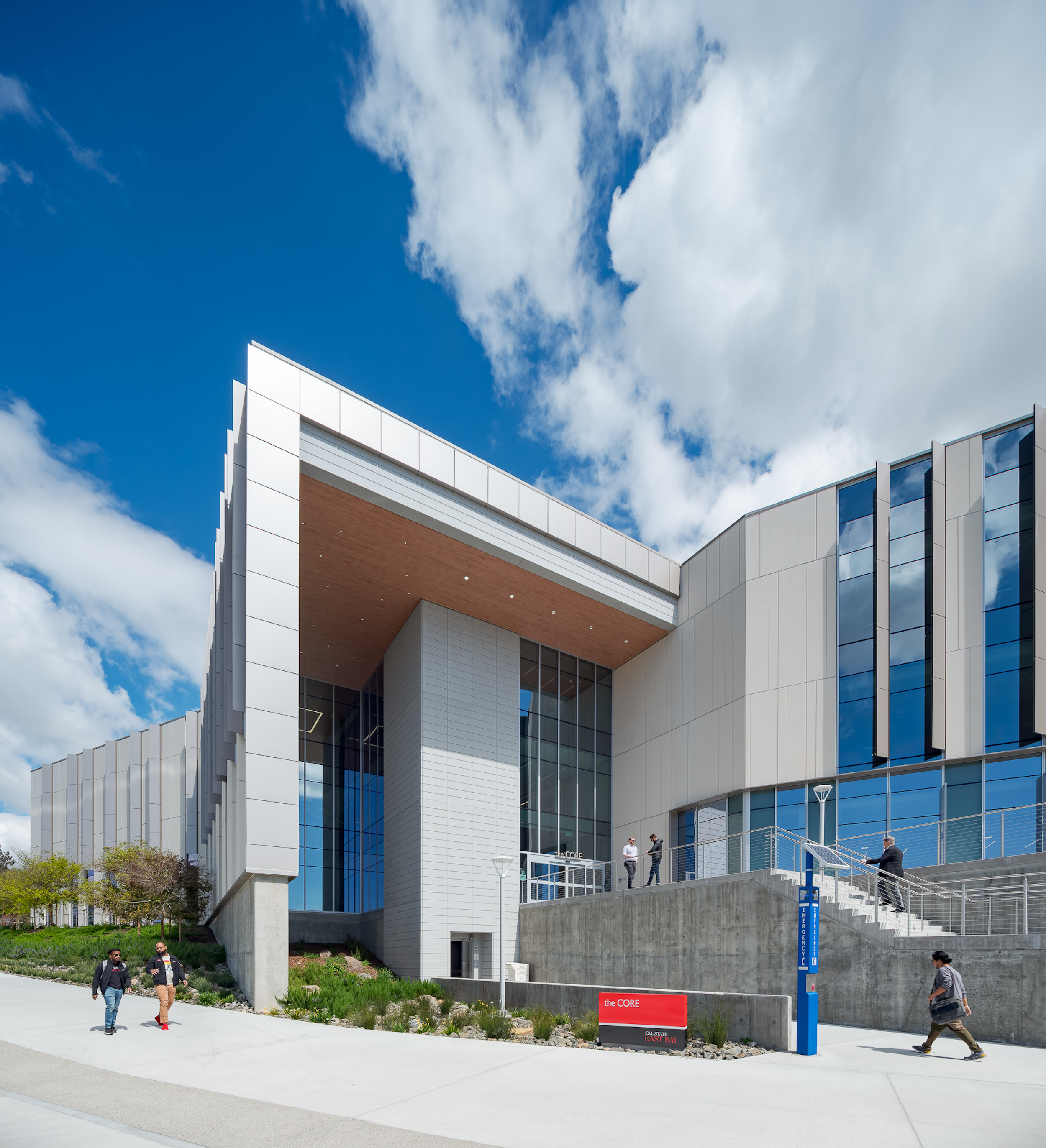
Generous open space and fenestration help knit the interior into a cohesive sum of many essential parts. In anticipation of earning LEED Gold certification, the building’s HVAC system aims for healthy indoor air quality, high levels of user controllability, and exceptional energy efficiency.
Each of CORE’s three stories offers a different approach to learning designed to help develop lifelong skills. The library is on Level Two. Level One houses a collaboration zone and innovation labs. Level Three is home to the SCAA and a roof deck provides an additional place for quiet study.
The visual dialogue within the building’s interior emphasizes the relationship between spaces that serve both the academic and social needs of students. CORE’s structure and functionality were designed to help CSUEB hone a distinct identity in the Bay Area’s rich educational landscape and enable it to be viewed as something more than a “commuter school.”
On the building team:
Owner and/or developer: California State University, East Bay
Architect of record, design architect: Carrier Johnson + Culture (Exterior)
Associate Architect: Anderson Brulé Architects (Interior)
MEP engineer: Integral Group
Structural engineer: Forell/Elsesser Engineers
General contractor/construction manager: Rudolph and Sletten
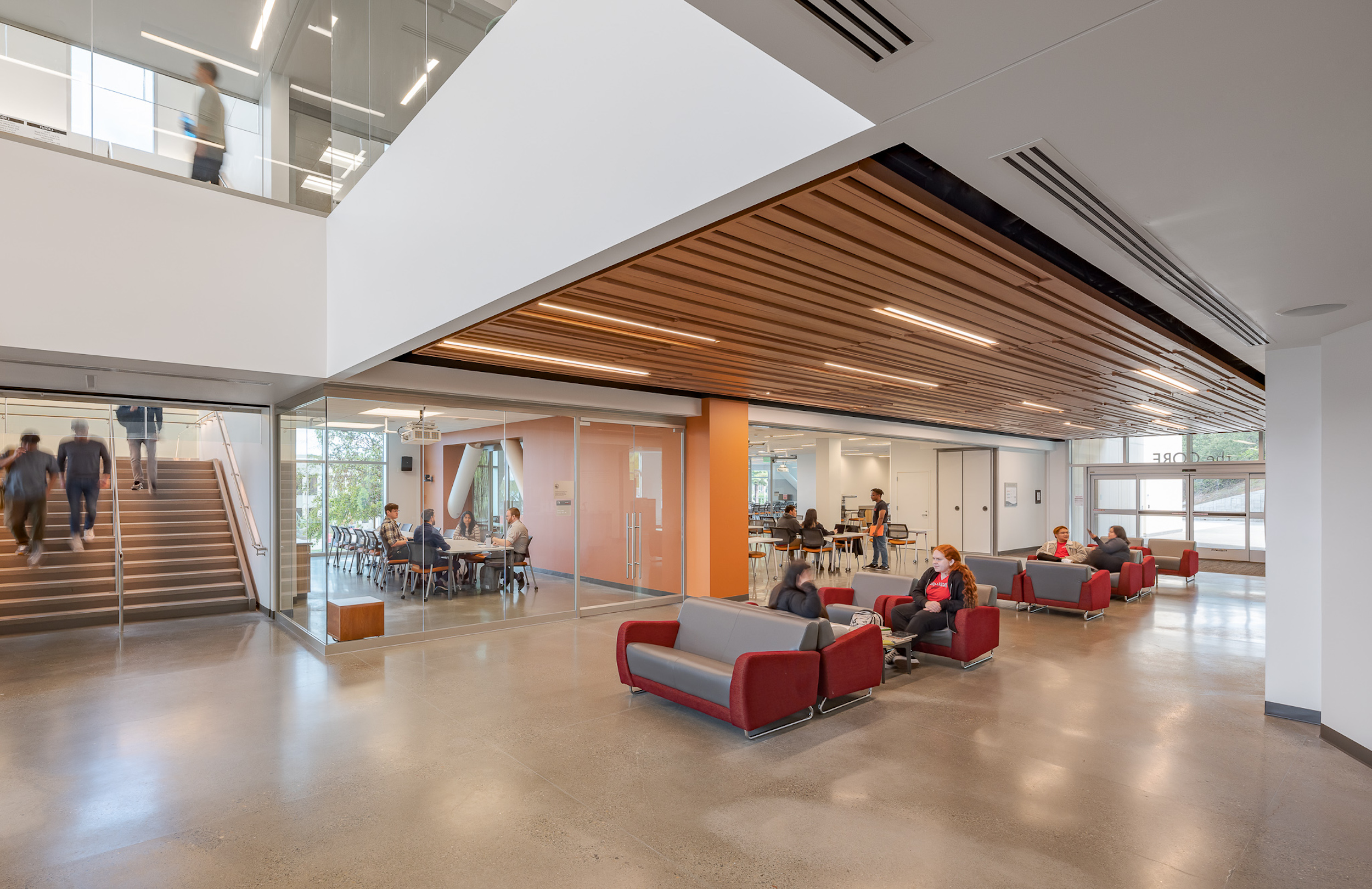
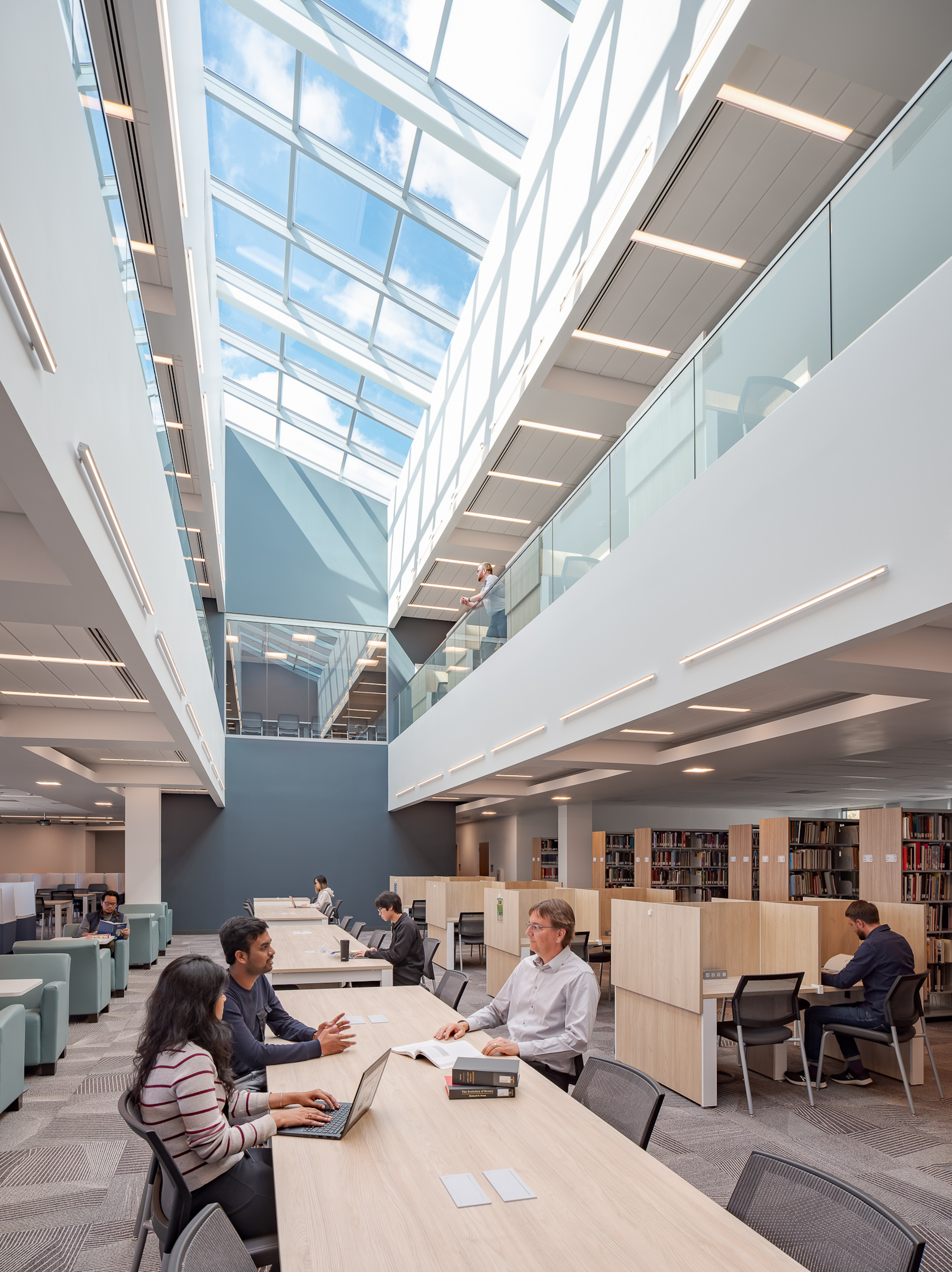
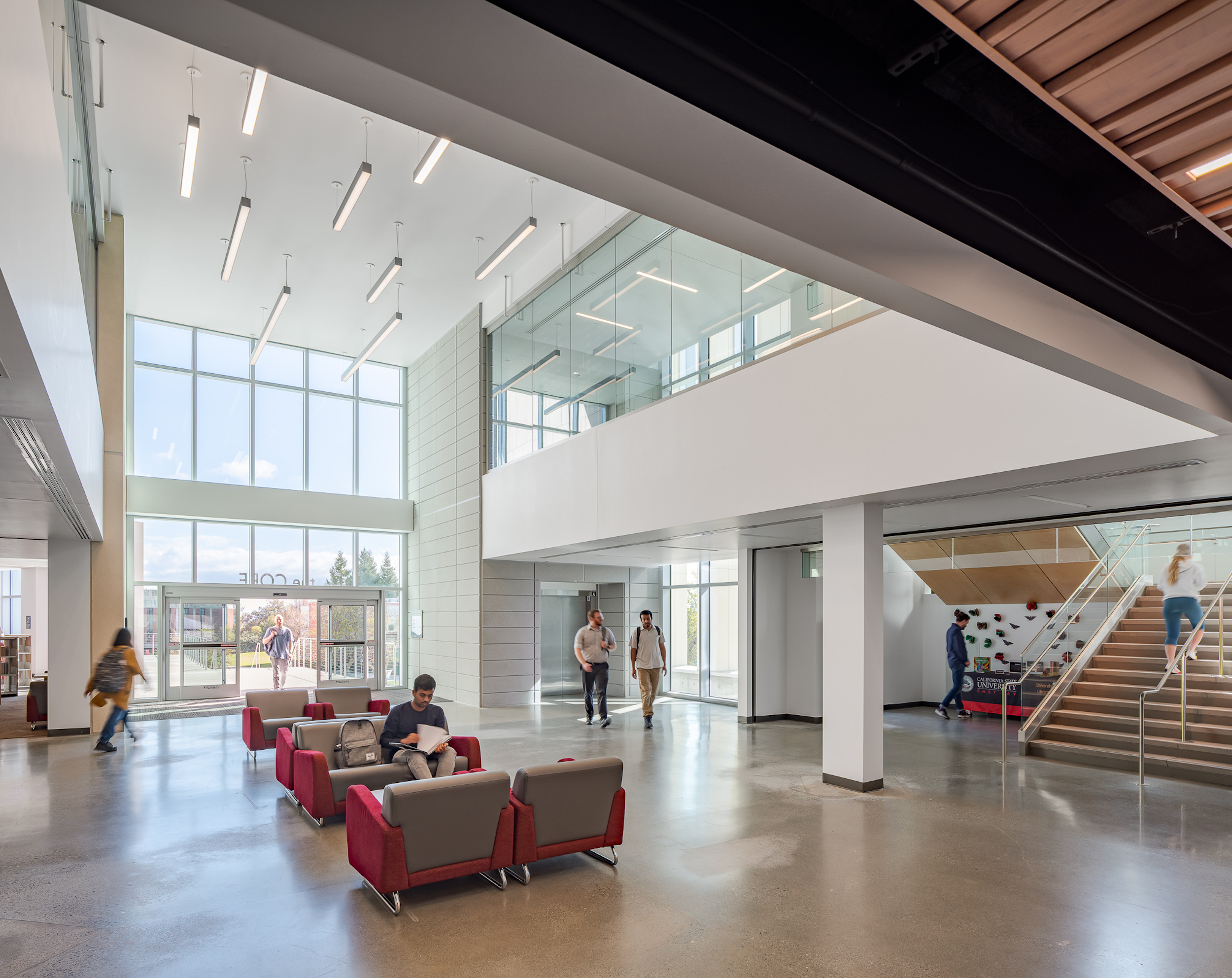
Related Stories
Green | Mar 29, 2017
Copenhagen Zoo and BIG unveil yin yang-shaped panda habitat
The new habitat will sit between two existing buildings, including the Elephant House designed by Norman Foster.
K-12 Schools | Mar 9, 2017
The future of education facilities: Creating spaces where learning happens everywhere
The art of designing schools lies not in just understanding what makes a functional classroom, but in how successful we are in creating a wide array of educational options for teachers and students within the school environment.
School Construction | Feb 26, 2017
A new survey finds education construction activity going strong this year
Surveys of school districts and colleges, though, raise questions about financing for future projects.
Education Facilities | Feb 7, 2017
Let’s get physical: Design possibilities for the digital classroom
As companies are increasingly looking for people who can do things like communicate clearly, solve complex challenges, lead teams, and define strategic direction, a growing number of learners are turning to any resource where they can learn these skills quickly, effectively and in sync with their busy lives, writes Gensler's Meghan Webster.
Architects | Jan 19, 2017
Harley Ellis Devereaux merges with Deems Lewis McKinley
The combination is expected to bolster HED’s presence in northern California and the K-12 sector.
Education Facilities | Jan 17, 2017
A charter school gives adults a second chance at earning a high school diploma
A dingy basement in Washington is converted to an office-like learning environment.
Education Facilities | Jan 10, 2017
Outdoor educational environments provide a campus experience
Interior and exterior spaces harmoniously provide a campus experience to challenge children in the classroom, while also providing opportunities for learning and play outside.
Education Facilities | Dec 14, 2016
Design for NYU’s new $1 billion academic and student housing development revealed
The building has been opposed for years as activists called for the land to become a public park.
Energy Efficiency | Dec 13, 2016
A Massachusetts college now features the largest zero-net-energy academic building in Northeast
Bristol Community College wants to be carbon neutral by 2050.
Education Facilities | Dec 7, 2016
How corporate design keeps educational design relevant
Learning is a lot like working; it varies daily, ranges from individual to collaborative, formal to informal and from hands on to digital.






